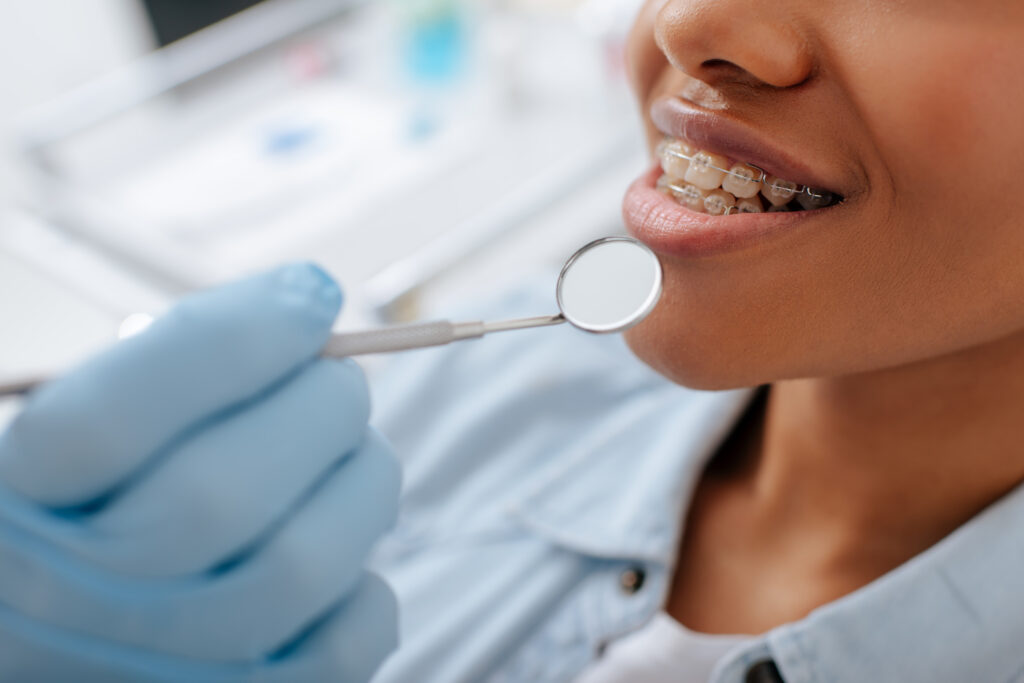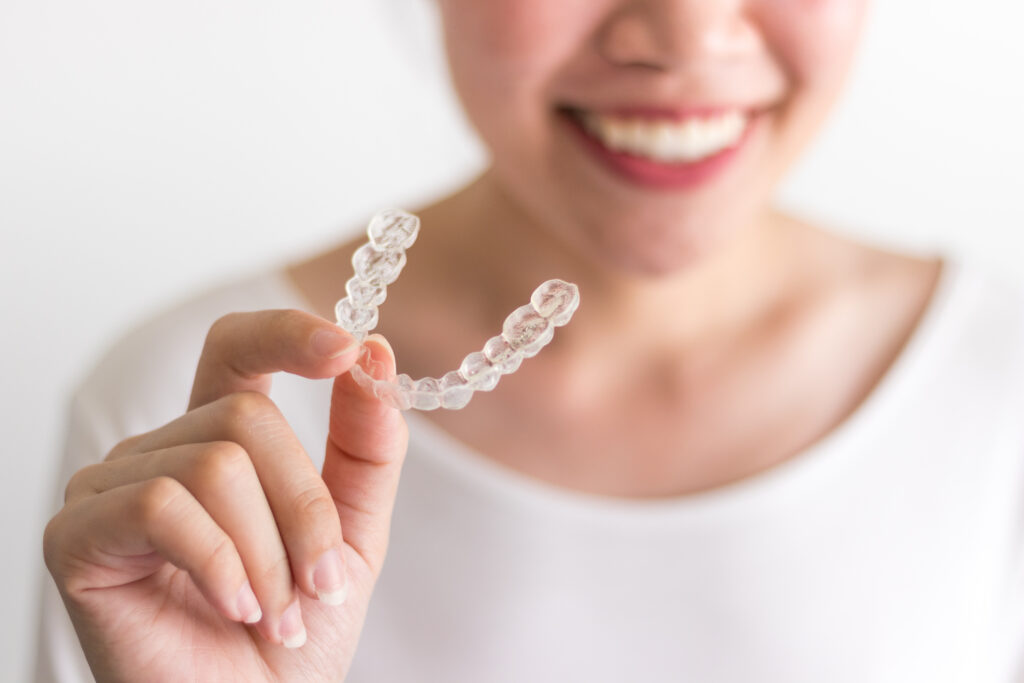Orthodontics is one of the most common fields of dentistry. Each year in the U.S., over 4 million people undergo orthodontic treatment — and approximately 25% of them are adults. Today, patients have access to an incredible array of treatment options, including Invisalign. More than 20 million people have now benefited from Invisalign treatment globally. As for braces, it’s estimated that over 20 million people are wearing or have worn braces at any given time.
In this guide, we’ll explore the differences between Invisalign and traditional braces, highlighting pros and cons to help you decide which option is right for you.


Invisalign vs. Braces: What Are the Key Differences?
Invisalign and fixed braces have a shared goal, to straighten the teeth and correct issues with the bite, but there are many important differences. These include:
- Removable Aligners vs. Fixed Braces Invisalign is a removable aligner system. Rather than using conventional fixed braces made from brackets and wires to move the teeth, they use removable aligners. These aligners are designed to be worn for at least 22 hours per day. You can take them out to eat, drink, and clean your teeth.
Treatment Processes Fixed braces are applied to the teeth, and you wear the same brace throughout your treatment. With Invisalign, you’ll receive a set of custom-designed aligners. Each aligner is slightly different. You wear your aligners in sequence, replacing them every 2 weeks.
Aesthetics One of the most common reasons why people choose Invisalign over traditional orthodontics is the discreet aesthetics the aligners offer. Invisalign aligners are virtually invisible, meaning you can have treatment without anyone knowing. Although fixed braces are much more subtle than they used to be, they are more visible than Invisalign aligners.
Treatment Options Invisalign is a versatile treatment option, but it has limitations. Typically, if you have more complex orthodontic needs, including severe issues with your bite and major misalignment or crowding, you may be advised to consider fixed braces. Fixed braces are suitable for almost every orthodontic prescription.
Which Treatment is Best for Me?
It’s beneficial to consider key factors when deciding which orthodontic treatment is best for you. Here are some examples:
- Your Age Your age may influence your decision. Braces are often recommended for teens and children because their jaws and teeth are still developing, making it easier to guide teeth into proper alignment. Fixed braces also ensure consistent wear, which is crucial for effective treatment—something that can be harder to manage with removable options like Invisalign, especially for younger patients who may forget or lose aligners.
- Your Lifestyle Your lifestyle can impact which type of brace will suit you best. If your job involves meeting people face-to-face or you enjoy playing sports or doing outdoor activities, for example, Invisalign may suit you better.
- Appearance Modern-day braces are sleek and discreet, but fixed braces lag behind Invisalign when it comes to aesthetics. Undergoing Invisalign treatment won’t affect your appearance during treatment, as the aligners are virtually invisible.
- Your Orthodontic Needs It’s wise to consider the best treatment options based on your orthodontic needs. Fixed braces are suitable for patients with minor, moderate and complex requirements. Invisalign is often better suited to individuals with minor or moderate issues. Your dentist will be able to suggest tailored recommendations based on your needs.
- Flexibility Flexibility is a major draw of Invisalign for many people. If you choose Invisalign, you can take your aligners out to eat, drink, brush your teeth, play sports, and go on dates, for example. If you have fixed braces, they’ll stay in place for the duration of your treatment.
- Treatment Duration Braces typically require 18 to 24 months of treatment, depending on the complexity of the case. Invisalign often has a shorter duration—about 12 to 18 months on average—though this can vary based on how consistently the aligners are worn and the specific orthodontic needs.
SCHEDULE A CONSULT TODAY
Choosing a treatment option is a big decision. If you’re looking for information, or you need advice about Invisalign or cosmetic dentistry in Chattanooga, TN, the Mint Dental team is on hand to help. Contact us now to schedule a consultation or to learn more about your treatment options.

